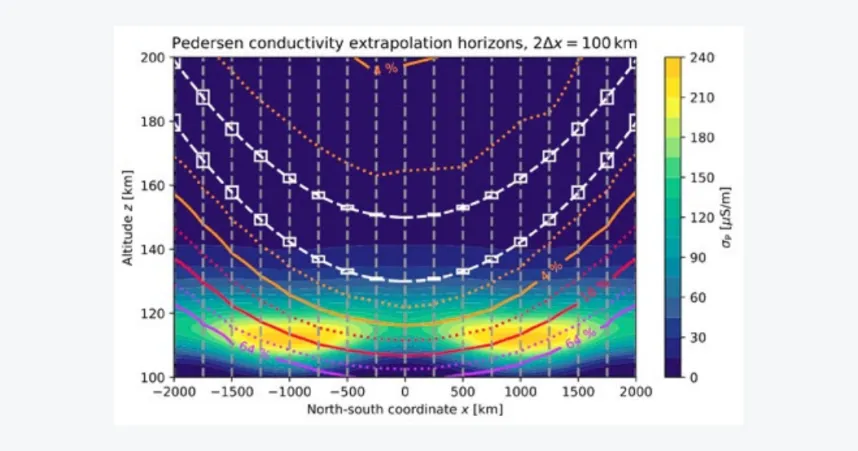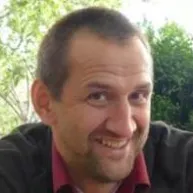Physics of Near-Earth Space
At Constructor University, Prof. Joachim Vogt and his space physics research group investigate the structure and the dynamics of the near-Earth space environment. In the past, they did this through plasma theory and magnetohydrodynamic simulations of the magnetosphere, but more recently they began using in-situ data from multi-spacecraft missions such as Cluster, Themis, and Swarm.
- Electric currents in the auroral zone: One of our thematic foci is the electric currents in the auroral zone that flow along magnetic field lines. They are called field-aligned currents (FACs), and these auroral FACs control the exchange of momentum and energy between the ionized upper atmosphere at high latitudes and distant magnetospheric regions. These currents are thus an important element in space weather prediction models. We are working on developing robust multi-point estimators for FAC density, constructing multi-scale analysis methods for the magnetic field, and validating data products such as Level-2 FAC density derived from measurements of the European Space Agency’s three-satellite mission Swarm.
- Lower thermosphere and ionosphere: In support of new satellite missions to study the lower thermosphere and ionosphere (LTI), we developed and implemented the Monte Carlo simulation framework DIPCont for constructing extrapolation horizons of key LTI observables in Python.
- Spacecraft missions: Our other activities revolved around magnetic field measurements of planetary spacecraft missions such as BepiColombo, with Joachim Vogt as co-Investigator of the magnetic field instrument, and Venus Express.
- Multi-scale spacecraft data analysis methodology — We extended a multi-scale single-satellite FAC analysis method, which was previously developed as part of a doctoral project at the university, and applied it to Swarm magnetic-field data. Combining time series from several spacecraft, we developed and tested another novel scale-sensitive vectorial correlation technique for studying auroral FACs.
- Validation of ESA Level-2 FAC data products — We evaluated the properties of different FAC estimators, giving special consideration of spatial scales, and compared them to reciprocal vector estimators based on a local least-squares approach.
- Multi-point estimation of electric currents and magnetic gradients — We developed and implemented a unified gradient estimation framework for general arrays consisting of arbitrary numbers of spacecraft, the rasada algorithm (Robust Adaptive Spacecraft Array Derivative Analysis). We tested and validated the novel algorithm using Cluster and Swarm measurements, and proved it to be statistically robust and suitable for very general array geometries.
- Empirical modeling of planetary magnetic fields and current systems — We constructed a high-resolution statistical model of the solar wind-induced magnetic configuration at Venus and refined it using about 3000 orbits of Venus Express magnetic observations.
- DFG Special Programme SPP 1788 DynamicEarth — We contributed to the DFG Special Programme SPP 1788, and presented our findings in June 2022 at the final SPP colloquium in Kühlungsborn.
Space physics research at Constructor University is embedded in national and international programmes and networks. The Swarm satellite mission is central to the DFG Special Programme SPP 1788 DynamicEarth, and Joachim Vogt is co-initiator and topic speaker for Ionospheric Current Systems. The FAC analysis methodology developed at Constructor University contributed to an international team effort dedicated to ionospheric analysis tools, hosted at and funded by the International Space Science Institute (ISSI) in Bern, Switzerland. Our Swarm Level-2 calibration activities are carried out in collaboration with the ISS Bucharest, Romania, and are regularly reported at Swarm Data Quality Workshops organized by the European Space Agency.
In 2019-2022, space physics research at Jacobs University was supported by a DFG project, which provided financial support for a postdoctoral researcher. The project SIFACIT offers financial support for a guest scientist, is carried out in collaboration with the ISS Bucharest, and funded by the European Space Agency.
- J. Vogt, A. Blagau, C. Bunescu, and M. He (2019). Local least squares analysis of auroral currents, Multi Satellite Analysis Tools - Ionosphere. ISSI/ Springer.
- C. Bunescu, J. Vogt, O. Marghitu, and A. Blagau (2019). Multi-scale estimation of the fieldaligned current density. Annales Geophysicae 37.
- A. Blagau and J. Vogt (2019). Multi-point fieldaligned current estimates with Swarm. Journal of Geophysical Research 124.
- J. Vogt, A. Blagau, and L. Pick (2020). Robust adaptive spacecraft array derivative analysis. Earth and Space Science 6.
- M. He, J. Vogt, E. Dubinin, T. Zhang, and Z. Rhong (2021). Spatially Highly Resolved Solarwind-induced Magnetic Field on Venus. Astrophysical Journal 923.

